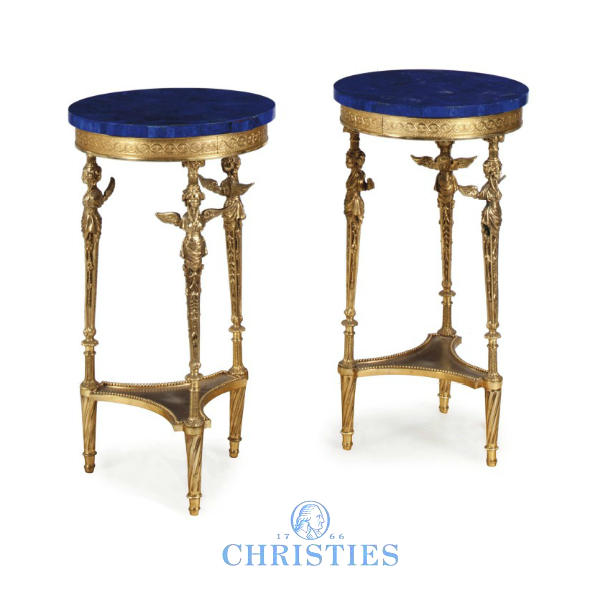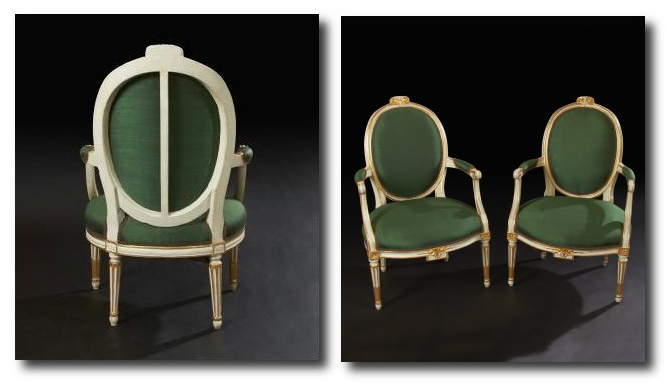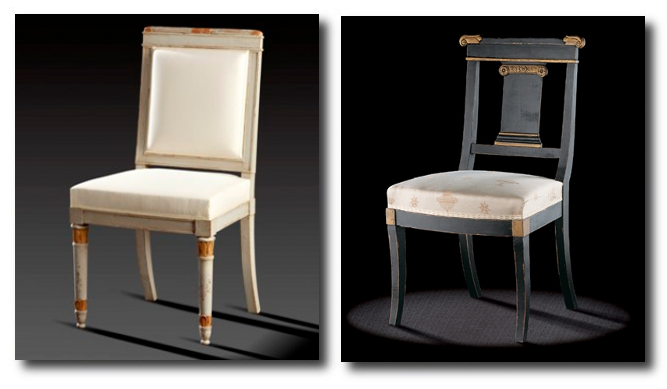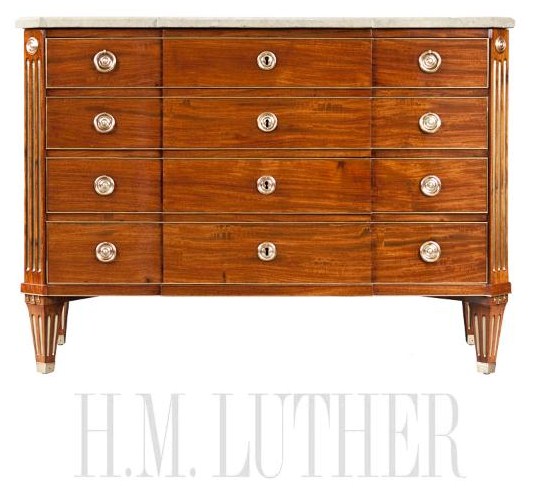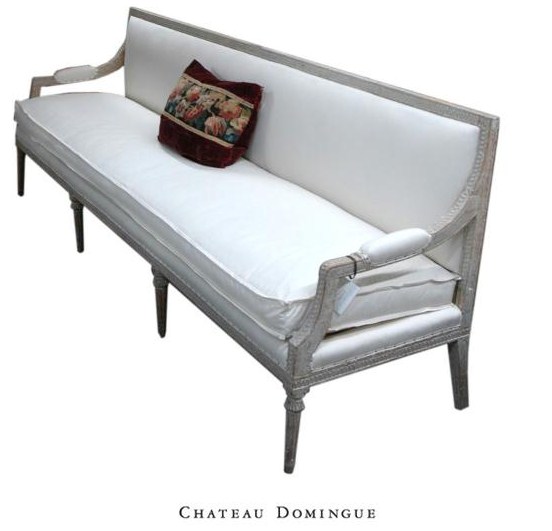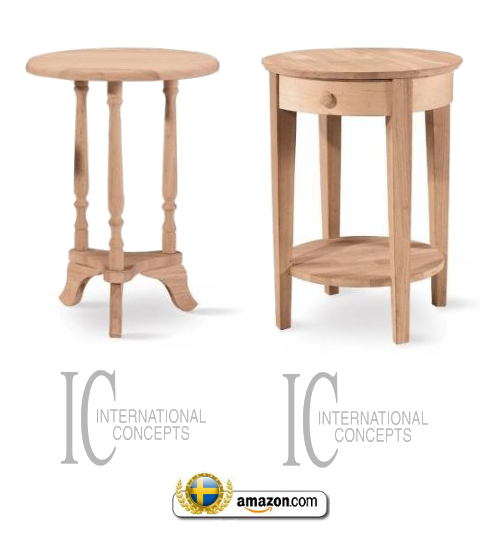The History Behind Jean Bernadotte Otherwise Known As Karl Johan
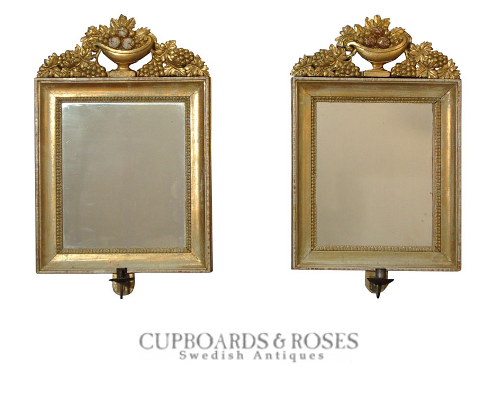 Pair of carved and gilded wood mirrors from the Karl Johan, or empire, period, Sweden circa 1830. Original brass candle holders on each. Original gilding, mirror glass, and backs. $8,500
Pair of carved and gilded wood mirrors from the Karl Johan, or empire, period, Sweden circa 1830. Original brass candle holders on each. Original gilding, mirror glass, and backs. $8,500
He was born by the name Jean Bernadotte in France, and later in life became the ruler of Sweden. Here is how the history unfolded…..
Napoleon I – On The French Front
In May of 1804, the French people voted to change the consulate to an empire and to make Napoléon the Emperor of France.
In 1805, Austria, England, Russia and Sweden became united in a new Third Coalition to move against France. It was in September of 1805, when Austria attacked the French controlled Bavaria. Napoléon moved his army into Germany in September, and by October, Napoleon captured the Austrians at Ulm and occupied Vienna. It didn’t stop there, in December, Napoléon won his most brilliant victory which decimated the Austro-Russo armies at Austerlitz.
In June of the following year, Napoléon named his brother Louis as King of Holland, and within each following each victory, Napoléon enlarged the French Empire.
On the other front, Prussia and Russia joined together to mount a new campaign against France. In October, of 1806, Napoléon’s army decimated the Prussian army at Jena and at nearby Auerstadt. Napoléon was interested in preventing his enemies, especially the British, from trading with continental Europe. In November, he declared a new administrative law, which banned English ships from all ports under French control.
Napoléon was on a roll, in June of 1807, Napoléon eliminated the Russian armies at Friedland, which resulted in the signing of the Treaty of Tilsit, by Napoléon and Tsar Alexander. Under the treaty, King Frederick William III, of Prussia, became a vassal to France and lost half of his territories. Russia was forced to recognize the yet-to-be-created Grand Duchy of Warsaw which was to be carved out of Prussian Poland. Russia was also forced to make other territorial changes. Napoléon then turned to defeating Sweden, which he did with the help of Russia, in 1808.
The Start Of Things Falling Apart For Napoleon
The Peninsular War began in 1808 when Spanish and Portuguese forces rebelled against French rule. Tens of thousands of French soldiers died in the war, and the loss of Spain and Portugal greatly damaged Napoléon’s prestige.
Napoléon divorces Josephine, aged 46 years old in 1809, because she had not produced an heir. Worried about the continuity of the empire, he had the senate pronounce his divorce from Josephine in December of 1809. It was because of this that Pope Pius VII excommunicated Napoléon. Retaliating, Napoléon had the Pope arrested on July 6. On February 17, 1810, the Papal States were annexed to France. The pope was then forced to sign an additional concordat and to annul Napoléon’s marriage to Josephine. It wasn’t too long after that that Napoléon married Marie Louise, in April, 1810, the 18 year old daughter of Emperor Francis I of Austria.
On July 9, 1810, Napoléon again increased the size of the Empire by annexing Holland and much of Germany to the Empire.
Jean Bernadotte – On The Swedish Front….
Bernadotte joined the French army and after the French Revolution, he advanced quickly and was in 1804 appointed as a Marshal of France by Napoleon I, even though the pair had a tumultuous relationship. When his service to France ended in 1810, he was voted the heir to the Swedish throne.
In August of 1810 Swedish Parliament had their eye on him for the Swedish throne. In October the same year, Bernadotte arrived in Sweden, and quickly took over as the real head of state, as the reigning King Karl XIII was in poor health. The Swedish royal family was dying out with King Charles XIII, so Baron Carl Otto Mörner (a Swedish courtier), advocated for his position for leadership.
Karl Johan had good relations with France however, Swedish foreign policy led Sweden into alliance with Russia and Britain against France. Sweden was then promised to Norway, which meant going against Napoleon. In 1813 led Karl Johan Swedish troops in the sixth coalition war , which was successful against France. After the victory against French, he forced Denmark to cede Norway by the Treaty of Kiel . Norway declared its independence after having hosted a national assembly at Eidsvoll, but after a short war in late summer 1814 the Norwegians surrendered, and entered into a union with Sweden.
A few facts about Karl Johan:
- He was originally named Jean Bernadotte, but was also named Jean Baptiste after John the Baptist
- He converted the royal court from Roman Catholicism to the Lutheranism, and never learned to speak Swedish or Norwegian. French was widely spoken by the Swedish aristocracy.
- He married in 1798 with Désirée Clary , who had previously been engaged to Napoleon Bonaparte .
- Rosersberg Carl’s Country Retreat – Featured in Neoclassicism In The North On Amazon
- “Rosersberg Palace – Found on abebooks.com
- Niall Smith See MORE Pictures on New York Social Diary.com
- Small Bouillotte Lamp, Empire Style – Found on en.expertissim.com
- Johann Jacob de Lose 1763-1844 1805 www.1st-art-gallery.com
- Spegel by Josef Frank and Estrid Ericson
- First Class Staterooms Empire Rooms. Pinterest
- Late Gustavian Early Biedermeier BJORK STUDIO
- Swedish Empire Chairs- D.LARSSON
- Swedish Empire Stools dlarssoninterior.tumblr.com
- Pair of side chairs Found on cupboardsandroses.com
- Pair of Swedish armchairscupboardsandroses.com
- Pair of Swedish armchairs cupboardsandroses.com
- Pair of Carved Armchairs cupboardsandroses.com
- Pair of armchairs, Sweden circa 1860, cupboardsandroses.com
- Don Freeman Photography
- Lundgrens Antikhandel
- The Neo Lifestyle: Laura Montalban
- Laura Montalban | New York Social Diary
- House of Blass Came Unraveled – NYTimes.com
- Biedermeier pieces are found throughout this house- featured on traditionalhome.com
- An antique Biedermeier cabinet (c. 1850) topped with antique marble Found on traditionalhome.com
- A Palette of Mississippi Blues – House Beautiful
- Biedermeier Found on roys-antiques.com.au
- Biedermeier – Tim Wood Furniture Limited
- Chateau de Malmaison Found on google.fr
- Dallas Interior Design Found on courtneyprice.com
- 1920’s Empire Style Daybed – Castle Antiques
- 19th Century Swedish Empire Mirror- D.LARSSON
- Hinkley 3200AN – Lighting Import Service
- Beautiful Gustavian Stool. Originally Seen On 1stdibs
- Also Seen At www.fangkuang.co
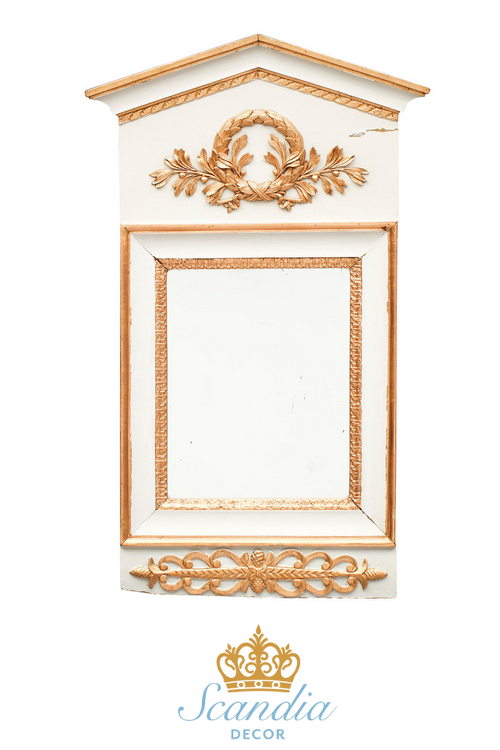 Small Gustavian Empire Swedish Mirror Scandiadecor.com
Small Gustavian Empire Swedish Mirror Scandiadecor.com
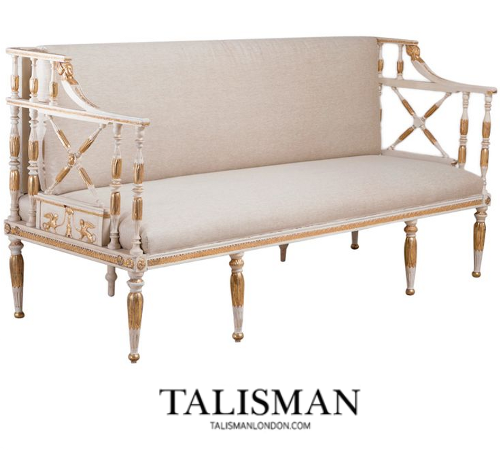 A Swedish Empire Sofa with Classical Gilt Detailing Upholstered by Talisman circa 1790
A Swedish Empire Sofa with Classical Gilt Detailing Upholstered by Talisman circa 1790
Biedermeier Secretaire Found on deringhall.com
















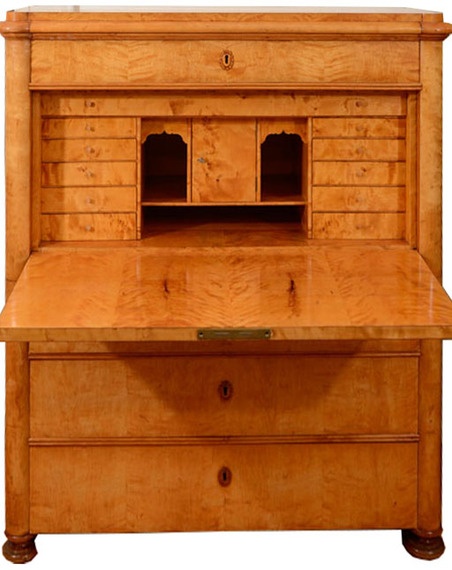





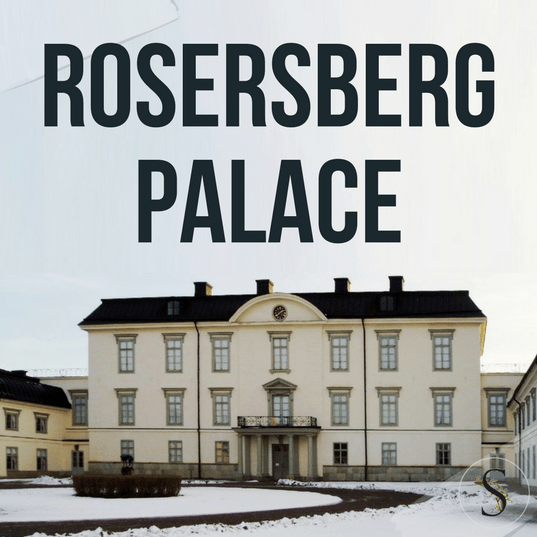
Sweden’s Empire Decorated Rosersberg Palace
Rosersberg Palace (Swedish: Rosersbergs slott) is one of the Royal Palaces of Sweden. Situated on the shores of Lake Mälaren, on the outskirts of Stockholm, it was built in the 1630s by the Oxenstierna family and became a royal palace in 1762. It was then that the state gave it to Duke Karl (later Karl XIII), the younger brother of Gustav III of Sweden.
Today at Rosersberg the rooms remain almost untouched from the 1795-1825 period. The interior takes you back in time to the authentic royal interior from the turn of the 19th century.
The second half of the 17th century, the Renaissance Palace became to be dated. Chancery President Bengt Oxenstierna acquired the estate, and renovated the home in the Baroque style that was fashionable at the time. He sought out the country’s leading architect, Nicodemus Tessin the Younger, and new wings were added to the building. The tall Renaissance gables were taken down and the exterior of the building was updated with a new hipped roof.
Then in 1747, Rosersberg was acquired by Baron Erland Broman. More alterations to the buildings were directed by one of the country’s most prominent 18th century architects, Jean Eric Rehn. On Broman’s death in 1757, the property was acquired by the State.
The property was then placed at the disposal of the young Duke Karl (later King Karl XIII) of Södermanland.
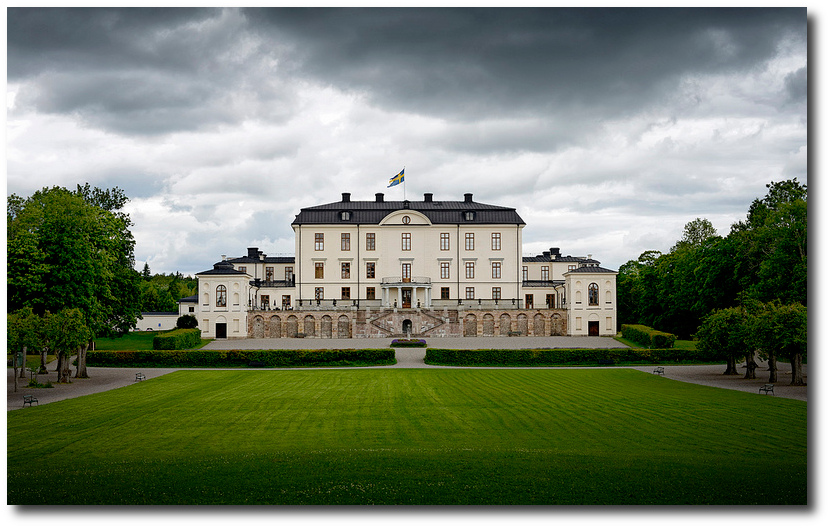
When Duke Karl (XIII) moved in around the 1760s, he modernized the palace in late Gustavian style. The interiors at Rosersberg Palace differ from the Gustavian style interiors of other royal palaces in Sweden. At Rosersberg the style has been known to trend after the Empire style. The palace combines the two styles: Neo-Classicism and the “Empire style”. Get some ideas from this beautiful castle for your own home.
- Sweden’s Rosersberg PalaceFrom Flicker
- Pair of Louis XVI carved and painted Fauteuils. Having oval backs, carved flower crest and apron on stop fluted legs.
- Photo Taken From Sw-Zamki.Narod.ru
- On the wall is a picture depicts the coronation of Karl XIV Johan. Photo Taken From Sw-Zamki.Narod.ru
Turn this unfinished international concepts table, sold for $42 dollars into a thousand dollar table with an additional marble top and some paint. Consider white paint with gold accents for a classic Swedish style.
International Concepts Accent Round Table with Drawer- $104
In this photo, you can see a neoclassical chair painted with a gray paint, outlined in a dark gray with white upholstery. Use the same color combinations with your painted furniture

